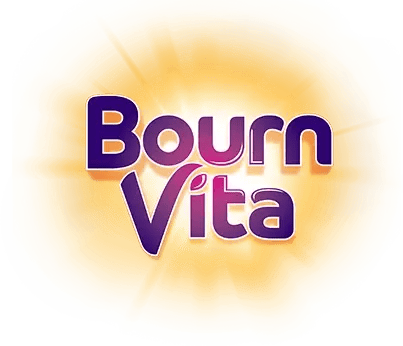- Nutritional Building Blocks For Steady Growth
- Role of Protein in Muscle, Bone And Energy
- How Physical Activity Boosts Metabolism And Nutrient Use
- Calcium and Vitamin D: Building the Foundation Of Bone Strength
- Exercise, Posture And Their Role In Height Development
- Balanced Weight Management Through Smart Diet Choices
- Rest, Recovery, and Consistency In Growth Patterns
Introduction

Growth in children is measured by height, weight and age chart, but those numbers are more than just numbers on paper. They show how well a child’s body is developing and how balanced their daily habits are. According to a study published in Nutrients. 2020, food and movement play a big role in this journey, not just physical health, but overall confidence and energy levels.
A balanced diet rich in proteins, vitamins, minerals and healthy fats gives children the right foundation for growth. Nutrients like calcium and vitamin D strengthen bones, iron and protein support muscle development and stamina. Meanwhile, regular physical activity keeps the body active, improves metabolism and helps in maintaining a healthy weight. Even simple exercises like running, skipping or stretching can make a big difference in how a child’s body responds to the food they eat.
The position of a child on the height, weight, and age chart reflects more than just genetics. For example, a 10-year-old boy may average around 137 cm in height globally, but depending on diet, activity levels, and overall health, he could be taller or shorter than that range. Similarly, girls may weigh anywhere between 28–32 kg at the same age, yet lifestyle habits like balanced meals, regular outdoor play, and proper rest often decide whether they stay within healthy limits. By looking at these numbers as guides rather than strict rules, parents can understand how everyday choices shape not only physical growth but also energy levels, immunity, and confidence.
7 Reasons How Diet and Exercise Shape Growth Patterns

Growth charts often seem like just numbers plotted in columns and lines, but they are a powerful tool to understand how your child is developing. They reflect much more than height and weight; they reveal whether your child is getting the right nutrition, physical activity, and overall care. Genetics set the foundation, but food and exercise are what shape how those genes are expressed. A balanced diet ensures your child gets the right nutrients, while physical activity helps the body use them effectively. Together, they influence how your child performs on the height, weight, and age chart, offering a clear picture of overall health.
Nutritional Building Blocks For Steady Growth
According to the Dietary Guidelines for Indians, every growing body needs a steady supply of nutrients like protein, calcium, iron, zinc, vitamins, and healthy fats. These nutrients support strong bones, sharper brain function, and better immunity. Without them, children may fall behind in weight or height compared to their age. A consistent, balanced diet of dals, vegetables, fruits, and grains ensures the body has everything it needs to keep up with healthy growth curves.
Role of Protein in Muscle, Bone And Energy
According to a study published in StatPearls Publishing 2025, Proteins act as the building blocks of muscles, tissues, and even hormones. For children, foods like eggs, pulses, paneer, fish, or soy are crucial to developing lean muscle and strong bones. A lack of protein often leads to low muscle mass and slower growth. On the other hand, steady protein intake helps children build stamina, stay active, and show balanced progress on growth charts.
How Physical Activity Boosts Metabolism And Nutrient Use
As per a study published in Front Physiol. 2021, exercise improves how the body digests, absorbs, and uses nutrients. Activities like running, skipping, cycling, or yoga help boost metabolism and appetite. Active children not only eat better but also use food more effectively, which supports healthy weight and energy levels. Sedentary habits, in contrast, may slow metabolism, leading to imbalances in weight for age.
Calcium and Vitamin D: Building the Foundation Of Bone Strength
Research conducted by Diseases. 2023, shows that height potential depends largely on bone strength, and that’s where calcium and Vitamin D play their part. Foods like milk, curd, ragi, almonds, and leafy greens provide calcium, while sunlight exposure helps the body absorb it. Without this combination, bones may not grow to their full potential, impacting height measurements on growth charts. Including calcium-rich foods in daily meals is one of the simplest ways to ensure steady upward progress.
Exercise, Posture And Their Role In Height Development
Based on a study published in J Lifestyle Med. 2022 shows that physical activity supports better posture and spinal health. Exercises such as yoga stretches, hanging, and core strengthening keep the spine straight and flexible. Poor posture can sometimes make children appear shorter or unevenly built, while good posture allows them to reach their true height potential and maintain balance.
Balanced Weight Management Through Smart Diet Choices
A study published in Nutrients. 2023, shows that a child’s weight is a sensitive measure of nutrition. Overeating processed foods or sugary snacks often leads to being overweight, while insufficient meals or a lack of variety can cause underweight concerns. Whole grains, fruits, vegetables, and protein sources help maintain an ideal weight for age. This balance ensures your child stays in the healthy range on the growth chart, avoiding fluctuations that could affect confidence and energy.
Rest, Recovery, and Consistency In Growth Patterns
According to a study published in JNMA J Nepal Med Assoc. 2022, proper diet and exercise routines need to be supported by rest and sleep. Growth hormones are released during deep sleep, helping the body repair, build, and grow. Consistency is also key—irregular eating patterns or exercise habits can slow down progress. A predictable routine allows the body to use nutrients fully, recover after physical activity, and show steady growth over time.
Conclusion

The height, weight, and age chart is more than a doctor’s tool; it is a guide to see how your child is growing in real life. Each meal, each active play session, and each night of good sleep adds to their progress. By combining a nutrient-rich diet with fun physical activity and proper rest, you give your child the chance to grow to their best potential. Supporting growth is not about quick fixes but about steady habits that shape their strength, energy, and confidence for years to come.
Her love for storytelling began with reading her grandfather’s speeches, where Tarishi saw the power of words in creating lasting memories. Combining her passions for food and writing, she has turned her life into a fulfilling path of sharing stories that celebrate flavours and how food brings communities together.
The views expressed are that of the expert alone.
The information provided in this content is for informational purposes only and should not be considered a substitute for professional medical advice, diagnosis, or treatment. Always seek the advice of your physician or another qualified healthcare provider before making any significant changes to your diet, exercise, or medication routines.
References
https://pmc.ncbi.nlm.nih.gov/articles/PMC9794932/
https://pmc.ncbi.nlm.nih.gov/articles/PMC10420931/
https://pmc.ncbi.nlm.nih.gov/articles/PMC8918377/
https://pmc.ncbi.nlm.nih.gov/articles/PMC9944083/
https://pmc.ncbi.nlm.nih.gov/articles/PMC8531728/
https://www.ncbi.nlm.nih.gov/books/NBK555990/
https://www.nin.res.in/downloads/DietaryGuidelinesforNINwebsite.pdf
















